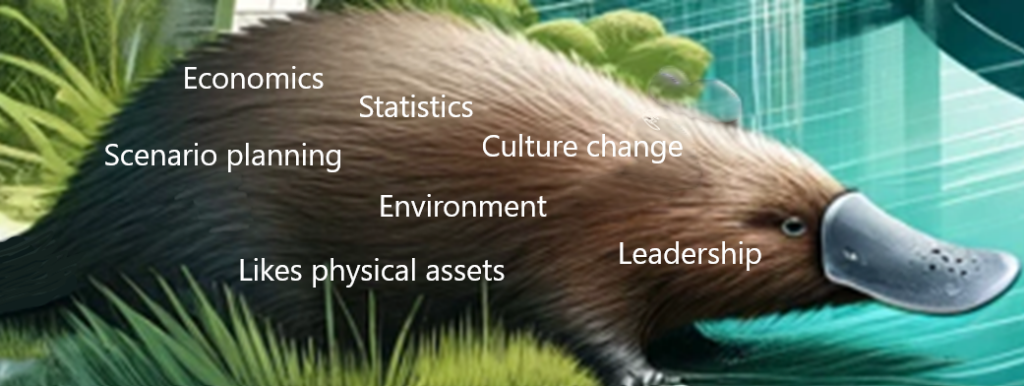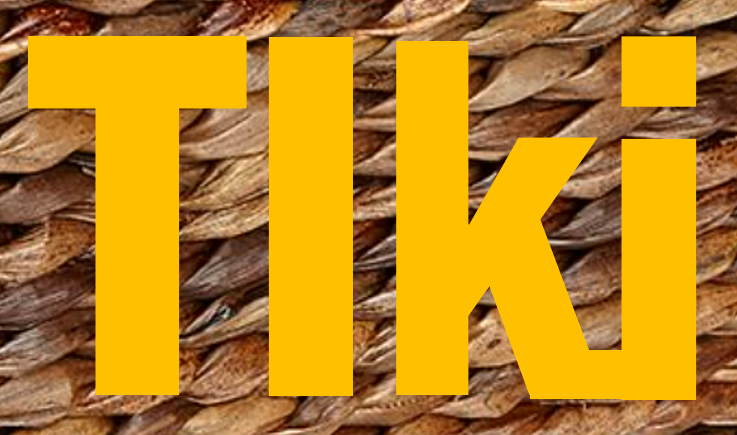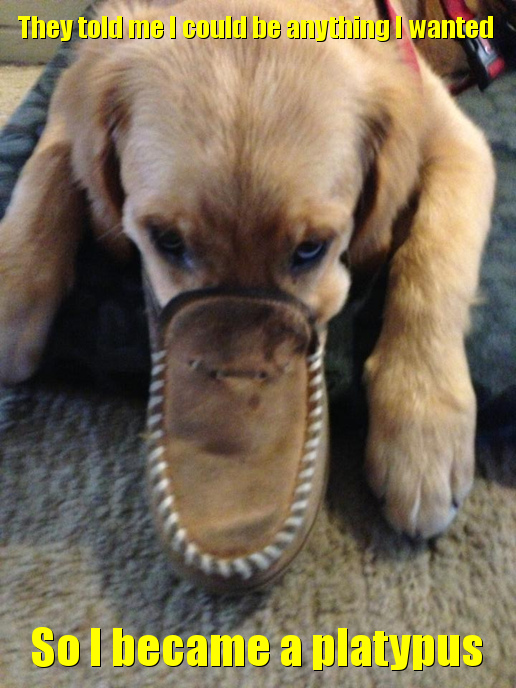
The Board of Talking Infrastructure wants to thank Penny – wants to make a big, big fuss over Penny – for the immensity of what she means to us and to Asset Management.
All of us had our lives and careers changed by Penny. Without her, we wouldn’t be calling ourselves asset managers, for a start. We are doubly blessed that she is also a great friend to each of us individually.
I first knew of Penny when another important AM person in my life, David Ford, came back from a trip to Australia and New Zealand in 2001 clutching a copy both of the International Infrastructure Management Manual and an issue of Penny’s Strategic Asset Management newlsetter. Saying there were some things we therefore would not have to make ourselves, and anyway could never have done so well.
I already was sure when I met Penny in person in 2004 at ICOMS we would be fast friends, going to stay with her and Bob in Adelaide on the MESA ‘eminent speaker’ tour that summer. My life certainly was never the same after that, as the next year I went back to work with her on a job for NSW Rail Corps… and the year after to live in Sydney. Where she and I could plot some more, ending up eventually with Talking Infrastructure itself.
Of course, the price I paid for her continuous inspiration was knowing I would always been running to catch up – sometimes several large steps behind her thinking. But that was always so much fun.
One thing I am most proud of is spreading her words around North America, making sure new assets managers knew who she was and her vision for infrastructure Asset Management. She has quite a fan club of younger women around the globe, including the USA. I would like to claim I am fan #1, but there are many pioneers in the queue ahead of me.
Talking Infrastructure would like to publish your memories and appeciation of Penny. When did you first come across her? Where did you take the ideas she inspired?

If Asset Management is to deliver better asset planning, we have a challenge. Are we living up to it?
The most obvious thing about AM is that it’s about physical assets. And for most of its history, the assumption has been that the main quality of an asset manager is that they need a background in those areas most concerned with physical assets: that is, engineering, operations, or maintenance.
Who else knows or cares about physical assets? And without that interest, AM might be unmoored: a branch of finance or corporate planning that simply doesn’t know or care enough.
The dilemma is that we need other skills that don’t come for free with delivery backgrounds.
Worse, we need perspectives that definitely go against what we learn in engineering school, or the motivation of operations.
- How do we nurture a profession of people who really like the realities of physical assets but think in a new way about them?
- How early do we need to reach potential asset managers?
There are some good signs – Dr Monica Beedles’ Street Smarts and Biz Smarts, for example, and the Canadian Network of Asset Managers (CNAM) work on AM competences. (And shout out to pioneers of new ways of getting to undergraduates – hello, Valerie Marcolengo!)
But, as CNAM points out, we have a chronic shortage of asset managers.
And many who struggle in post without the tools of effective asset management planning.
How do we reach those with the environmental, analytical, process, culture change and bigger picture skills we need?
What is your ideal undergraduate syllabus to grow the next generation of asset managers?
Thanks to the British Columbia South Island AM Community of Practice for the opportunity to discuss competences this week!

From script by Lou Cripps
What’s the responsibility of Asset Management? In my mind, there’s no question.
The output from an effective Asset Management system is a better allocation of resources to physical assets. It’s all about allocating $ and people where they are most needed, and not to spend or do where that is not needed.
And that can mean only one thing. AM – the system, not the team – should be the major input to the budgeting process for asset-intensive sectors such as power. And a major input wherever there is a significant amount of budget at stake.
The Asset Management input to the budgeting process is what Penny originally called the AMP. Given that ISO 55000 didn’t quite get it, I wonder if we should now spell it out – the asset management planning process (AMPP). One integrated, co-ordinated process that looks across the whole asset base with consistent principles on which to base decisions about priorities for the medium and long term.
We should expect – hope, indeed! – that this will over time have a major impact on business budgeting. That asset-related budgets will change significantly when we have a more optimising system, to make better use of information and plan further into the future.
The focus is not individual decisions, but the wider decision processes.
- What are the priorities for asset renewals, that is major work to replace or refurbish assets?
- What is the appropriate level of planned maintenance to optimise cost, risk and performance?
- Given the current state of the asset base, what is a realistic level of allocation to reactive work going forward?
- How do any growth or new assets fit within the overall strategy (and how important are they in relation to sustaining the assets/ services we already have)?
And this is not planning just about the physical assets. Both the money and the resources have to be considered: there is little point in arguing for money if there is not also a realistic plan for the people to deliver the work.
If we agree this is what Asset Management has to deliver, that also tells us what the main job of a dedicated AM function is and its key relationships with other functions. We can work through what kind of skills and capabilities we require, and where AM sits in the organisation.
It’s why I don’t consider Asset Management in any sense a sub-branch of Engineering – or the capabilities what we teach on current engineering degrees. It’s also not Finance, or HR, or Procurement, though it involves all of these.
And the bigger the amount of dollars at stake, the more vital that we do good Asset Management.
Talking Infrastructure is looking again at the AMP and the asset planning we require for future-friendly infrastructure. If you would like to be involved, contact us!

from script by Lou Cripps
Just a thought about current Asset Management practice.
One core tool used by many is the maturity assessment or gap analysis. See, for example, the Institute of Asset Management’s SAM+ tool.
The concept here is to audit an organisation against a standard, recognise its shortfalls against that standard, and recommend actions to close the gaps – in an implementation plan often referred to as the Asset Management roadmap. The standard could be ISO 55000 series, or perhaps more usefully the 39/now 40 subjects in the GFMAM Asset Management Landscape.
ISO 55000 has some oddities (don’t get me started here on the terms ‘SAMP’ and ‘asset management plans’), but the involvement of far more people in the revision in 2024 probably makes its coverage more realistic.
The problem with the world of AM assessments and roadmaps isn’t fundamentally which topics we assess.
It’s that we simply don’t take our own principles seriously.
Alignment with organisational objectives is surely the key organising concept in ISO 55000. And yet we still propose AM implementation against standards – rather than our corporate priorities.
We also have a history collectively of ridiculous outputs, roadmaps that detail 70 or 130 different actions, for AM teams of perhaps 2 or 3 people to implement in the next 2 years – as though we had no experience, no common sense of what it’s like to implement major change. Almost as though we aren’t taking the AM Landscape ‘red box’ Organisation & People into account at all.
In Asset Management, there isn’t a ‘right’ way to do everything. That’s engineer talk. The optimal way forward is the best realistic option for us, for where we are now, for what our organisations are trying to achieve.
Sure, there are some things which are probably always a bad idea to do, and some that are usually good. But it’s not about a set of rules. Not a template we can fill in, leaving our brains in a jar somewhere.
Whatever we call it, a top-level strategy for Asset Management is essential. But it only makes any sense as a case for how AM will contribute to our organisational targets and challenges. And the practical actions that will do most to support the overall business strategy.
Yeah, the answer is almost always going to be a better planning process for our assets.
But if we start by taking something from inside AM, like ISO 55000 or GFMAM 40 Subjects, and use that as a basis to propose priorities for implementation, we are doing what asset people have too often done before.
Ignoring the business priorities. Not being aligned, right from the start.
Instead, the first thing is to make sure we really understand the organisational challenges, by talking with the people at the top. They won’t always be crystal clear, but that’s the right terrain to start with. Perhaps we’ll even be able to assist in articulating the challenges.
Then talk about what we can realistically do with AM to meet them.*

The gap assessment we require is the gap between what AM could usefully do for our organisation and what we are actually achieving at the moment.
*In my mind, there is very little chance that the corporate priorities for infrastructure won’t require good Asset Management, urgently. We are definitely not at risk of talking ourselves out of a job.

One of my great pleasures in life is to sit in a café and talk infrastructure. A popular topic, even before Lou Cripps came up with the idea Asset Managers are platypuses, is what makes an effective one? Or even what attracts us in the first place.
Who are ‘our people’?
To defend us from accusations of exclusivity, I need to point out that it’s not about what you studied at university, or which country you grew up in. Good Asset Managers are ‘anywheres’, as Ark Wingrove put it.
This is, of course, a Serious Subject, as we desperately seek to switch to a future-friendly mindset; seeing the bigger, longer picture around physical assets. But it’s also kinda fun to think about the difference that makes a difference.
Like the AM team who came on one of my courses and took me literally. We teach whole life costs, cost-risk optimisation, thinking in risk, and how information is all about decision-making. But I don’t think most attendees go away and start actually doing any of that. This team did.
One reason people don’t try whole life cost modelling, or risks in $, is because they think it’s too hard before they even start.
But my best students – well, if that was how you do Asset Management, they would figure out how to do it. When I later asked Todd Sheperd how they quantified asset risk, he said he looked it up on the internet. After reading a recommended book and going on a recommended course. (As I said, he took me literally.)
Yes, he must have had the confidence to believe he and his team could figure it out. But I think it’s more than that. It’s about curiosity and openness to learning.
It also involves a belief that if I don’t know something, someone else may have worked it out, maybe in a completely different context. We can learn from others – like 17th century gambling mathematicians, or stock markets traders.
Or actuaries. It’s as if 99% of attendees on AM courses have never heard there is a whole profession who have worked out how to put $ on risks.
Sitting in a café recently with Todd and Julie DeYoung talking about infrastructure, we also recognised another quality: interest in what we can learn from people doing something that’s not exactly the same as what we’re trying to do. Like wondering what we can learn from assets that aren’t exactly what we have – instead of deciding ‘our’ assets are so special there is nothing we can learn from others (and the processes of AM planning and modelling don’t apply to us).
In other cafés years ago with another old AM friend, Christine Ashton, we thought it’s about pattern matching. About looking at a problem we had, and the kind of technology approach it needed, as opposed to a fixation on a particular software tool, for example. What kind of problem is it? What sort of tool could help?
To me that’s linked to 80:20 thinking, but I suspect that some of my best AM buddies are better at details than me. It’s happily straying into the unknown, instead of trying to force everything to fit into what you already know.
I love (nearly) all of my students, of course. But not all of them turn out to be my sort of café people.
Shout out to yet another recent café and Janel Ulrich – her of the ‘can we develop our SAMP in the next 12 hours?’ (yes, of course we can). I love the way she loves ‘our kind of people’, in all our quirks and heartaches and irrepressible openness.
Others who will recognise their café contributions include John Lavan and Manjit Bains. And Penny, with whom too many of these café conversations have to be virtual.
What does perfect Asset Management look like? What’s at the top of the mountain we’re climbing?
And what’s a metaphor between friends?

But to some of us it’s more a windy, winding road, over yet more hills, where we sometimes see part of the road up ahead, but never glimpse the end.
Why does this matter? Having recently faced a virtual room full of people saying they would know what to do next, if only someone could describe the end state for them: as though Asset Management is an accomplishment, something you can complete. Done, checklist all checked, and move on?
In contrast, is there a destination for, say, engineering? Although many engineers may not examine what they believe, they surely think of engineering more as a state of mind, a way of thinking, rather than something that gets finished. (And who even has a vision of HR?)
We could describe the top of our mountain as the point where everyone takes it for granted that we think longer term, whole system and lifecycle, use information wisely, and truly embrace uncertainty.
But I don’t think that’s what the metaphor betrays. I think it’s more ‘when we have a complete asset inventory and a strategy for every class’ and can stop thinking about them and move onto something more fun. The way some, at least, appear to think a check the box approach to ISO 55000 is what we need, or even the point.
But, you know, it’s also whether fun to us means continual discovery, the thrill of not knowing and then learning – or getting back to my desk to fill something in.
Roll on, rolling road!

From Bill Wallsgrove
AI continues to not quite to get what a platypus is – just as many people still don’t understand what Asset Managers do.
I could tell two miserable current stories of Human Resources not getting it. A major power utility with ISO 55000 certification where HR led a structure reorganisation, and failed to include any Asset Management (and the saddest part was how much effort the AM team had put into trying to bring HR along with them). A transit agency where HR insist they know better how to recruit good Asset Managers – again, after years of effort from the AM team on what to look for.
But lamenting HR failures is like shooting fish in barrel: too easy.
And we are all still working it out.
For example, looking at AM teams where they have really done interesting things, I see how much difference ‘professional’ information skills have made. The most impressive Asset Managers I know include a librarian, an ex-military intelligence veteran, and a teacher of data science. I wonder if good Asset Management is even possible without information nous.
And the perennial questions of whether you can learn to ‘embrace uncertainty’, or think strategically. Are good Asset Managers born, not made? I don’t want to believe so.
I certainly don’t have it all and have depended through my career on other people with complementary skills to mine.
As the Institute of Asset Management (IAM) starts its review of its Competency Framework, to update and expand the original work led by Chris Lloyd, I get the feeling more than ever that it isn’t just a matter of hiring people with certain skills, but of encouraging those who think about the world in particular ways.
I’m on the Competences Steering Group for the IAM. This is a plea for input: what is your experience on the most important skills, experience, aptitudes, attitudes for good Infrastructure Asset Management?
What have we learnt about good people in the nearly 40 years of Asset Management?
At an event organized by Women in Asset Management North America for Infrastructure Week USA in May, several of us explored how we develop future Asset Management practitioners. And not just through formal college courses, but also engaging high school students in infrastructure.
With Lou Cripps of Talking Infrastructure and three leading women US Asset Managers – Amy Lindblom, Mildred Chua and Katty Fleming – we also included a draft ethics statement for discussion.
- We are managing the assets on behalf of our communities as well as our organizations, not assets for their own sake, and certainly not for ours
- We take responsibility for continuously developing the knowledge and skills to manage the assets well
- We recognize our dependence on other skills and experience, especially from those people who work directly with the physical assets
- Our communities and organizations depend on us to take the longer view, the bigger picture, the system-wide view, and to ask hard questions about the implications of what we decide to do and not do to the assets
- We need to consider all the unintended costs and risks across time of decisions
- This requires both honesty about past performance and our current processes, and the ability to understand what the data can (and cannot) tell us, through good analysis
- We need, above all, to face honestly who benefits and who does not from our infrastructure decisions
What do you think? Would you sign?
NB I do not know why North America has so many preeminent women in thought leadership roles in Asset Management, I am just glad it does.

To coincide with our presentation on the Waves of Asset Management at the IAM Global Conference on June 15, Talking Infrastructure launches: TIki. The wiki for strategic Asset Managers.
To being with, while we build up the content, it’s read-only, but we invite you to join in with further development.
Organized by Wave, we aim to build up an unrivalled knowledge base on Strategic Asset Management, including access to the best of… Strategic Asset Management, Penny’s biweekly newsletter from 1999 to 2014, as well as more on Building an Asset Management Team, and through DAN and other networking with AM leads in North America and beyond. And don’t miss an episode of The Story of Asset Management, which for Penny was always about being strategic.
On Wave 3, Infrastructure Decision Making, we are using TIki to capture thinking on future friendly assets – better questions, some of them hard, particularly in this era of ‘Build Back Better’ trillions.
For Wave 4, we aim to start to nibble away at how to integrate infrastructure and planetary health, starting with the initiatives at Blue Mountains City Council.
TIki already has many pages, and many more to come. It’s easy to follow your curiosity, as well as backtrack via the trace.
Click on TIki in the top menu bar, and start your exploration now!

I teach people about Asset Management – up to 1000 a year – and I get to see a wide range of reactions. Best is when someone in class decides Asset Management is what they have been looking for their whole career, its mixture of technical and people and business challenges exactly right for them. Or the maintenance guy who, by the end of the course, was explaining to everyone else to “do the math” for optimal decisions.
For some, on intro courses, it’s mildly interesting, at least as long as their leaders tell them it is.
Sometimes, however, people resist.
I taught a class of design engineers a few years ago, who argued the toss on everything, and failed the exam afterwards. I think we can take it that they didn’t get it because they didn’t want to. (I have also taught a class to project engineers who had understood AM was the way forward for them personally and had got together to sign up for it.)
Recently, I was working with an organisation – an early-ish adopter in the USA – where they were keen enough on AM to create a series of jobs for ‘Asset Manager’. Not necessarily what I, personally, would call Asset Managers, but rather engineering roles to develop priorities by asset class for replacement capital projects.
The way we teach AM, following the lead of Richard Edwards and Chris Lloyd (two very smart UK pioneers) is top down. If strategic AM is aligned to organisation priorities and levels of service targets, we start with what those targets are, with external stakeholders interests, the role of top management, and demand forecasting. In other words, context and goals. I warn everyone about this right at the start – and also make it clear that nothing else matters if we don’t understand what we want the assets for in the first place.
I was struck, this time, by the lack of curiosity the class had. No-one knew what their level of service targets were, they stumbled to think about who their key regulators were, where demand was heading, even who might have a legitimate interest in what assets were being replaced, outside of engineering and operations. It wasn’t just that they didn’t know, they also didn’t much care. They were not stupid.
I was struck by how weird it is, really, that we have to teach anyone about alignment. That smart people working with assets don’t stop to ask what their organisations are really doing with those assets.
What a good Asset Manager really needs more than anything is curiosity – asking all the questions about why and how and how we can do it better in future.
But some people just aren’t very curious, for some reason. They are not much fun to teach!

Recent Comments